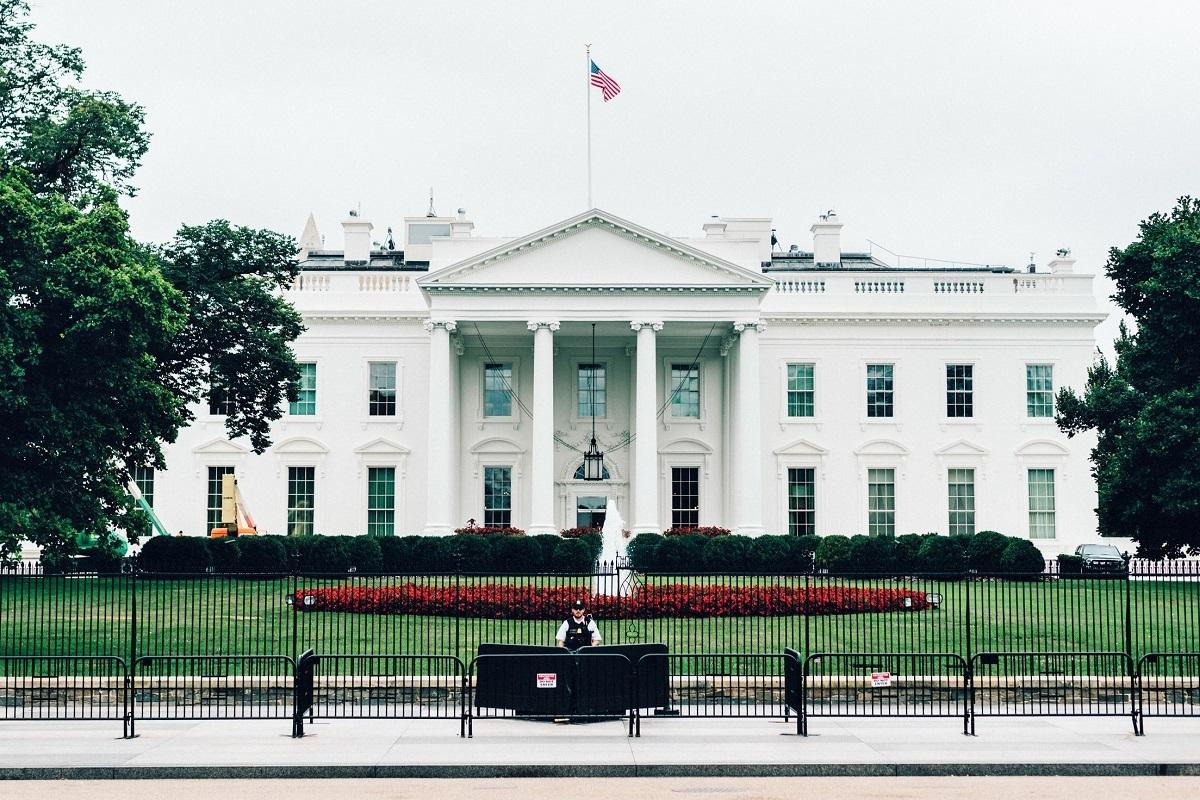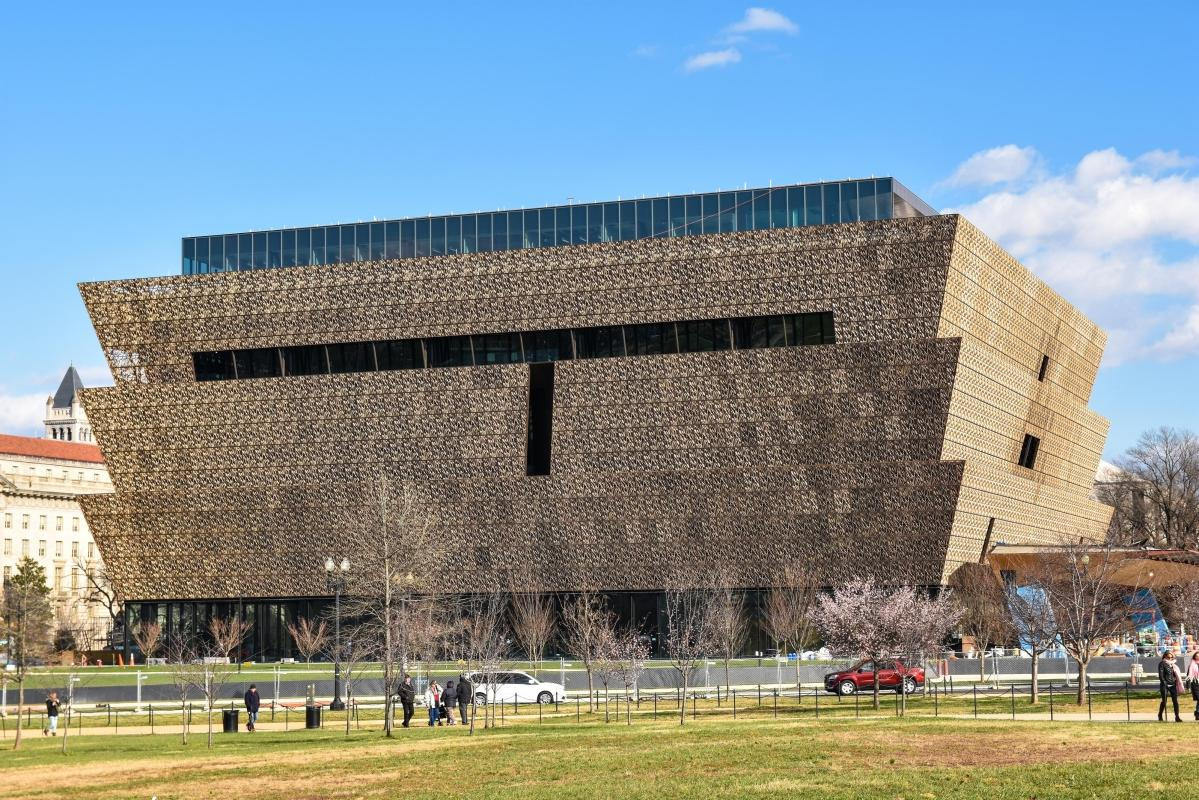Accessible DC: Wheelchair & Scooter Guided Tours
Wheelchair-Friendly Adventures in Washington D.C.!
The White House

Why Visit?
Wheelchair-Accessible Tour of The White House
Embark on an unforgettable journey through the heart of American history with a wheelchair-friendly tour of The White White House. This iconic symbol of the U.S. presidency offers a glimpse into the lives of those who"ve shaped America from this grand residence.
Preparation & Arrival
Start by securing your self-guided tour request through your Member of Congress; it"s important to do this between 3 months and 21 days before your visit. Ensure to mention accessibility needs. For international visitors, contact your home country’s embassy in Washington, D.C. On the day, arrive at the White House Visitor Center at 1450 Pennsylvania Ave NW. This can be reached easily by accessible metro stations such as Federal Triangle or Metro Center. Parking can be found at Ronald Reagan Building, a wheelchair-friendly facility.
Tour Highlights
Once your tour time arrives, head to the White House’s north gate. The tour is free and self-guided, allowing you to explore at a pace comfortable for you. Highlights include the East Room, where many presidential receptions are held, the Green Room, used for small receptions, and the famously oval Blue Room. The White House is equipped with ramps and lifts, making all public tour areas accessible.
Interesting Facts
- The White House has 35 bathrooms, 132 rooms, and 6 levels in the Residence.
- Several U.S. Presidents have made significant modifications to support disabilities, including FDR who added ramps.
Post-Tour Relaxation
After your tour, consider visiting the nearby President’s Park. It’s a serene spot perfect for reflection and has accessible paths, offering views of the White House South Lawn and the national monuments.
This tour not only allows you to witness the epicenter of U.S. governance but ensures accessibility is prioritized, making it a seamless and enriching experience for those with mobility challenges.
Wheelchair-Friendly Tips: Check for specific amenities and accessibility features relevant to wheelchair-friendly travelers.
U.S. Capitol

Why Visit?
Embark on a remarkable journey through the heart of American democracy with a wheelchair-friendly tour of the U.S. Capitol in Washington, D.C. This accessible adventure ensures everyone can experience the historic wonders of this iconic institution.
Starting Point: U.S. Capitol Visitor Center
Your tour starts at the Capitol Visitor Center, the main entrance for all visitors to the U.S. Capitol. Located below the East Front plaza of the Capitol at First Street and East Capitol Street, it"s easily accessible by Metro. The nearest stations, Capitol South and Union Station, are both equipped with elevators. Upon arrival, you"ll find accessible parking spaces along East Capitol Street and its cross streets.
Enter through the accessible entrance at the center"s main door, where security screening is wheelchair-friendly. Free manual wheelchairs are available on a first-come, first-served basis.
Capitol Tour
The guided tour of the Capitol begins at the Visitor Center. You"ll explore the Crypt, the Rotunda, and National Statuary Hall. Each area is equipped with ramps and elevators, ensuring smooth navigation. Engaging tour guides will regale you with tales of the building"s construction, pivotal legislative moments, and the art that adorns its historic halls.
Interesting Fact: The Capitol Rotunda is a remarkable engineering feat with a dome standing 288 feet high and weighing an astonishing 14.1 million pounds!
Post-Tour Explorations
Post-tour, head to the Capitol Reflecting Pool for a serene view—it"s a great spot for reflection and photos. Then, enjoy a stroll through the adjacent, wheelchair-accessible United States Botanic Garden, where you can immerse yourself in America’s diverse plant life.
Dining and Rest
Conclude your day with a meal at the Capitol Visitor Center’s cafeteria, which offers a variety of dining options and is fully accessible.
This tailor-made, accessible tour not only offers a deeper understanding of the United States government but also ensures comfort and ease for all visitors, making it an enriching experience for travelers with mobility considerations.
Wheelchair-Friendly Tips: Check for specific amenities and accessibility features relevant to wheelchair-friendly travelers.
Lincoln Memorial

Why Visit?
Embark on a memorable, wheelchair-accessible journey to one of America"s most iconic landmarks, the Lincoln Memorial, situated at the west end of the National Mall in Washington, D.C. This tour ensures that everyone, regardless of mobility challenges, can soak in the rich history and grandeur of this American symbol.
Starting the Adventure
Begin your day early at the Foggy Bottom Metro Station, which is equipped with elevators for easy access. From there, you can catch the DC Circulator bus to the National Mall route, which is not only accessible but also puts you a short distance from the Lincoln Memorial.
At the Lincoln Memorial
As you approach the memorial, the path is predominantly flat and smooth, ideal for wheelchairs and scooters. Dedicated accessible parking spaces are available along Ohio Drive, SW, between the Lincoln and Thomas Jefferson Memorials, with ramps leading up to the main site.
The Lincoln Memorial, designed by architect Henry Bacon, resembles a Greek Doric temple and contains 36 columns, each representing a state in the U.S. at the time of Abraham Lincoln"s death. Inside, you"ll find the majestic statue of Lincoln seated, carved by the renowned sculptor Daniel Chester French. For an enriching experience, an audio tour accessible via mobile phone is available, providing interesting facts and narratives about the monument"s history and significance.
Enjoy the View
Don"t miss the incredible views from the steps — overlooking the Reflecting Pool, with vistas stretching to the Washington Monument. This spot offers a breathtaking panorama, perfect for reflection or capturing memorable photos.
Accessibility Features
Ramps and elevators ensure full access to all public areas of the memorial. Accessible restrooms are located at the nearby refreshment kiosk.
Wrap up your visit with a peaceful rest along the serene Reflecting Pool, a fitting end to a day steeped in history and inspiration.
Wheelchair-Friendly Tips: Check for specific amenities and accessibility features relevant to wheelchair-friendly travelers.
Washington Monument

Why Visit?
Embark on an accessible and enriching adventure around Washington D.C."s iconic Washington Monument, a tribute to America’s first president, George Washington. This 555-foot marble obelisk towers over the National Mall, offering not only a historical journey but also a panoramic vista of the capital’s sprawling landscape.
Starting the Day: Getting There
Begin your tour at the Smithsonian Metro Station, which is equipped with elevators for easy access. From there, it’s a smooth, flat path along Independence Avenue. As you head towards the monument, enjoy the lush greens of the National Mall.
Visiting Washington Monument
Accessible paths lead to the monument"s base, where you can admire the structure"s grandeur up-close. Entry to the monument is wheelchair-friendly, but remember to book your tickets in advance online to avoid the hassle of long queues. The monument’s elevator will whisk you to the observation deck, where you can soak in stunning views of the Capitol, the Lincoln Memorial, and the World War II Memorial. The elevator"s interior has recently been modernized, ensuring a comfortable ride for all visitors.
Surrounding Attractions
After visiting the monument, take a leisurely roll around the surrounding park. Paths are wide and well-maintained, perfect for wheelchairs and scooters. Just a short distance away, you"ll find the World War II Memorial, which is completely accessible and offers insightful views into America"s history with beautifully designed Atlantic and Pacific pavilions.
Refreshment and Rest
Cap off your visit at the nearby Pavilion Café in the Sculpture Garden of the National Gallery of Art, which is accessible and provides a serene setting for a relaxing break. Enjoy a bite amidst the art installations and lush plantings.
Interesting Fact
Did you know the Washington Monument once held the title of the tallest building in the world? It"s an architectural marvel designed to stand the test of time, making your visit a truly monumental experience!
Explore, learn, and enjoy the accessibility of this awe-inspiring landmark, ensuring a memorable trip through America"s rich history.
Wheelchair-Friendly Tips: Check for specific amenities and accessibility features relevant to wheelchair-friendly travelers.
National Museum of African American History and Culture

Why Visit?
Embark on a captivating journey through the National Museum of African American History and Culture (NMAAHC), a monument that celebrates the richness and diversity of the African American experience. Ideally positioned on the National Mall in Washington D.C., this museum offers an accessible and enlightening day out for visitors on wheelchairs or mobility scooters.
Getting There
The NMAAHC is conveniently accessible via public transportation. The closest Metro stations are Federal Triangle on the Blue, Orange, and Silver lines, and Smithsonian on the Blue and Orange lines, both of which are equipped with elevators. If you"re driving, accessible parking is available in surrounding lots and garages. Additionally, the museum"s entrance on Madison Drive has ramps to accommodate all visitors.
What to See
Start your visit with the museum"s powerful centerpiece, the History Gallery. Accessible by an elevator, this gallery walks you through three levels that chronologically explore the African American experience from slavery through the civil rights movement to today. Highlights include a segregation-era Southern Railway car and Emmett Till’s original casket, both of which are presented with thoughtful accessibility in mind.
Accessible Features
The museum is fully equipped for mobility-impaired visitors, with wide aisles for scooters and wheelchairs, plenty of seating, and accessible restrooms on every floor. Free manual wheelchairs are available on a first-come, first-served basis.
Dining and Relaxation
Don’t miss a meal at the Sweet Home Café, where the tables are wheelchair accessible. Here you can savor dishes that narrate the African American culinary story, complementing the rich history you’re exploring.
Plan Your Visit
Entry to the NMAAHC is free, though timed-entry passes are required during peak seasons. You can reserve these passes online in advance to ensure a smooth visit.
This museum not only makes history accessible but does so with a profound respect and consideration for all visitors, ensuring everyone has a powerful, inclusive experience.
Wheelchair-Friendly Tips: Check for specific amenities and accessibility features relevant to wheelchair-friendly travelers.

